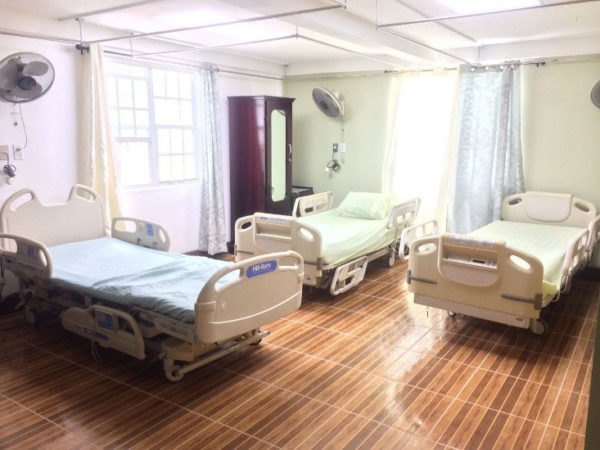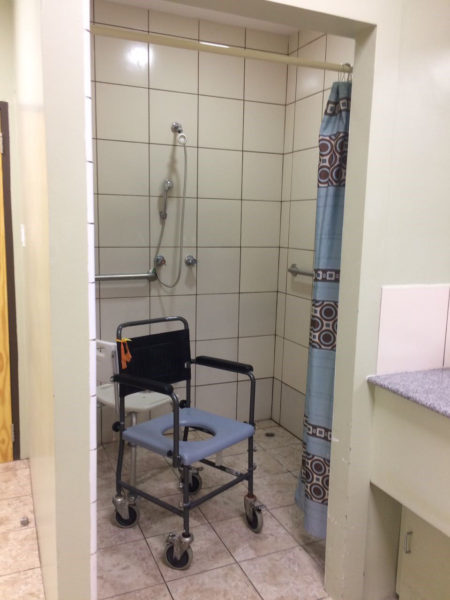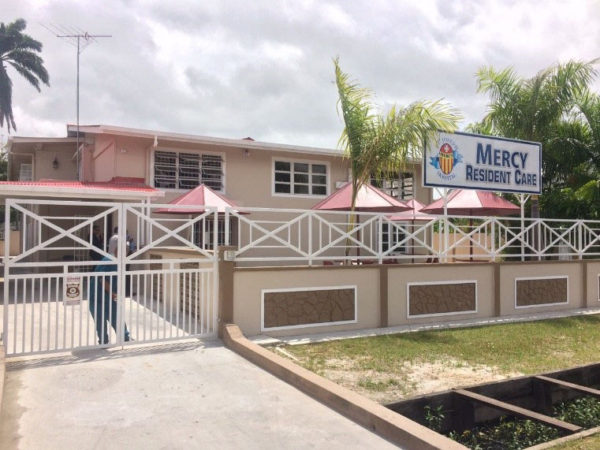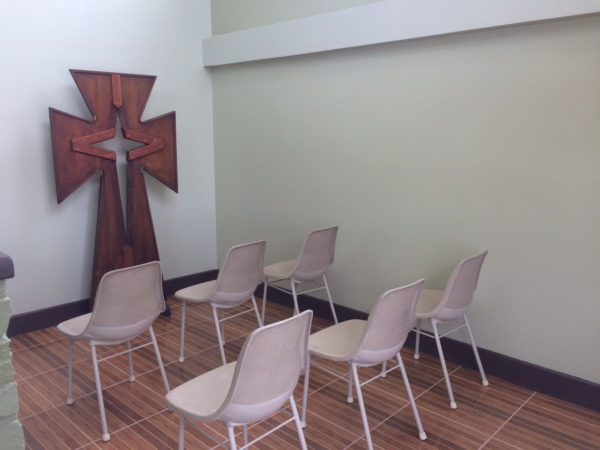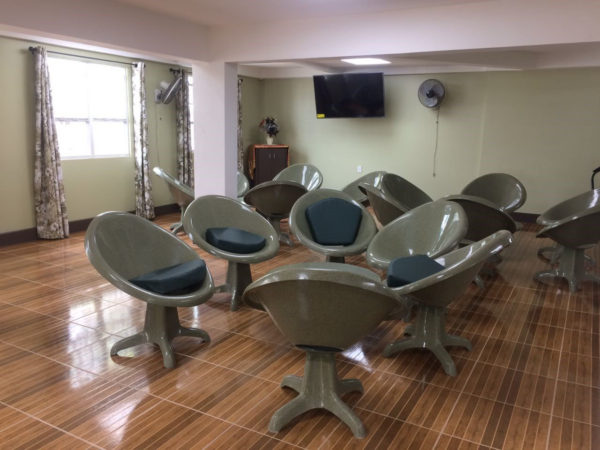As institutionalized elderly care becomes more normalized, the St Joseph Mercy Hospital has invested in making the experience as comfortable and homey as possible for its residents.
Mercy Resident Care abandons the sterile feel of hospitals and the often melancholy atmosphere associated with elderly care institutions to create what the hospital’s CEO describes as a “home away from home” experience for its residents.
Although a subset of the St Joseph Mercy Hospital, apart from the sign placed outside the Lot 3 Pere Street, Kitty building indicating that the two are affiliated, there are very few other hints to suggest this is so.
The only giveaway might be the hospital beds that occupy the rooms; but to see those one must first make one’s way past the outdoor seating area, shaded by umbrellas and palm trees, and through the lounge, furnished with cushioned moon chairs.
Taking into consideration the physical limitations of some of the folks, the home is equipped with safety rails in the halls and bathrooms, ramps to accommodate wheelchairs as well as an elevator.
The home has the capacity to house 33 residents, with its combination of four-bed wards, five-bed wards, private rooms and private self-contained rooms. There are currently 15 residents occupying the facility; the oldest will be 101 years old in April.
“St Joseph Mercy Hospital has always had a tradition of looking after the elderly. It started in the 80s when one of the doctors asked the then administrator for a place for persons to just rest and recuperate after surgery,” Helen Browman, St Joseph Mercy Hospital’s Interim CEO stated in an interview.
From there, she explained, families, often those residing abroad, would request room for their relatives. This led to the hospital developing a section of its institution to facilitate elderly patients living in.
Browman said that over the years the practice of families seeking to have their elderly placed in the hospital slowed, presumably as a result of the cultural outlook then, when it was the belief that elderly persons should be taken care of in the home and not institutionalized. The practice was formally shut down in the 90s, but interest in the service had not completely waned. “…We still had people coming to us and saying well, ‘I have an elderly person with chronic disease, I need someone to take care of,’ ‘There’s no one to take care of them’ or ‘It’s too much of a burden on the family,’” she said.
Browman believes more families are seeing the need to have individuals who are capable of addressing their relatives’ health needs providing care for them. “So we had them in the hospital for a number of years and then a decision was taken that we need to move them out of the hospital and create a home for them, because in the hospital setting there’s still a hospital setting. But here, as you can see, it’s a home, we built it like a home so that it would help them in the transition and to live out the rest of their years.”
Mercy Resident Care was established on November 28, 2016, at the site where the Sisters of Mercy convent formerly stood. It was built at a grand cost of over $90 million. There are 11 caregivers and seven nurses on staff, including the facility’s manager, Leslyn Holder.
The residents there have a range of challenges, including physical and mental health issues, and so are exposed to various forms of therapy based on the recommendations of their doctors.
“We don’t like to say anybody is bed ridden because with the right equipment and the right procedure anybody can get out of bed,” Holder said, while noting that patients are taken out for pressure relief.
Activities are planned daily for them, with scheduled times for visiting outdoors, exercise sessions, and pedicure days, among others.
Built on a Catholic foundation, there are provisions for the residents’ religious practice, with the choir visiting twice a week, as well as weekly visits from a priest and communion sessions being held.
Browman acknowledged that often persons would be plagued with guilt when dropping off their elderly family members but noted that they sometimes return to find that the person has taken on a “new life.”
“They’re in a comfortable environment; there’s somebody who’s focused on their needs and can take care of them, because think about an elderly person in the family— of course their children have their own children so the focus is on taking care of their children. Here, they’re getting individual attention,” she said.
The CEO added that families need to take care of themselves and their relatives and noted that sometimes doing what is best for those persons is putting them in a facility where they can be properly cared for, and where their families can still have access to them and spend time with them. “And that could be showing even more love because you want so much for them to be looked after in the right way as well as you looking after yourself,” Holder added.

